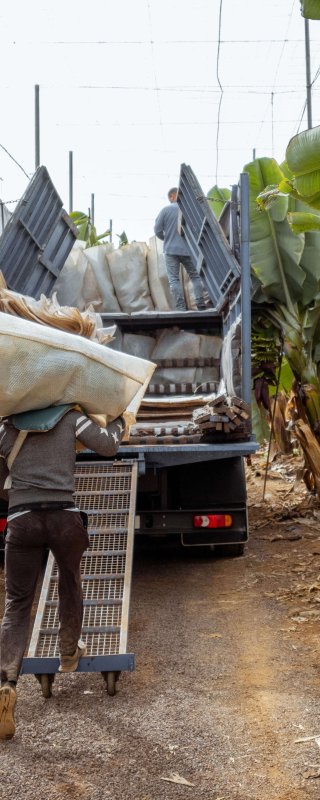
Harvest practices for banana
Proper picking is a precondition for being successful in the rest of the supply chain. The performance of the harvest crew is therefore critical to deliver a good quality product. First of all, picking at the right maturity is important to get the bananas in good (green) condition on the long-distance market. The harvest and further handling must be done carefully to avoid bruising and other damages to the product. The use of clean and suitable materials such as sharp knives and a cable way system in the plantation also serves this purpose.

Harvest of bananas
Bananas for export markets are harvested at the pre-climacteric green stage. They must have sufficiently developed their shape in diameter and length. If harvested too early, the taste will not develop well. However if you wait too long, they will become overripe before reaching the consumer. Determining the right harvest moment is therefore important for the eating quality and marketability of the bananas. Good training, instruction and monitoring of individual pickers can ensure a good starting quality. Another important point of attention for the banana harvest is to prevent latex stains on the banana skin..


